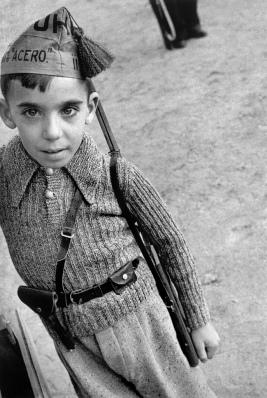I’ve been quite a reticent blogger until recently, but seem to have got it more or less worked out now, although I’m not as sociable as a good blogger should be. Nonetheless, I seem to have arrived in the ‘sphere, by being tagged for a meme by someone I consider a fairly big league blogger, Roland of But I Am A Liberal. The instructions are this:
“List seven songs you are into right now. No matter what the genre, whether they have words, or even if they’re not any good, but they must be songs you’re really enjoying now, shaping your spring. Post these instructions in your blog along with your 7 songs. Then tag 7 other people to see what they’re listening to.”
Well, here we go. Not very spring-like, I know.
 1. Leonard Cohen “The Partisan”
1. Leonard Cohen “The Partisan”
Here’s two versions from YouTube – poor quality live, with Spanish subtitles, or good quality from the record, with cool slide show. Here’s the story of the song, originally “La complainte du partisan”, written in London during 1943, by Emmanuel D’Astier de la Vigerie (called “Bernard” in the French Resistance, a Stalinist til 1956, then an anti-Stalinist) and Anna Marly. (Here‘s Marly’s version.)
2. The Pogues “Lorca’s Novena”
 YouTube here, last.fm here, homepage here.
YouTube here, last.fm here, homepage here.
Ignacio lay dying in the sand
A single red rose clutched in a dying hand
The women wept to see their hero die
And the big black birds gathered in the sky
Mother of all our joys, mother of all our sorrows
Intercede with him tonight
For all of our tomorrows
The years went by and then the killers came
And took the men and marched them up the hill of pain
And Lorca the faggot poet they left till last
Blew his brains out with a pistol up his arse
Mother of all our joys….
The killers came to mutilate the dead
But ran away in terror to search the town instead
But Lorca’s corpse, as he had prophesied, just walked away
And the only sound was the women in the chapel praying
Mother of all our joys….
I was tempted to pick “The Sick Bed of Cuchulainn”, some of the backstory here.
3. Victor Jara “Luchin”
See also two other songs I love: Arlo Guthrie’s “Victor Jara” (words by the late Adrian Mitchell), and Calexico’s “Victor Jara’s Hands”. [Download mps of last from HaHa Music, Captains Dead, Tonegents.]
 4. Manu Chao “Desaparecido”
4. Manu Chao “Desaparecido”
Last.fm/YouTube; homepage.
I carry on me a pain and sorrow,
that doesn’t let me breathe,
I carry on me a final sentence,
That’s always pushing me along
They call me the disappearer
when they come I’ve already gone,
Flying I come, flying I go
Quickly, quickly on a lost course.
5. Gotan Project “Santa Maria (Del Buen Ayre)”
YouTube/Last.fm; MySpace. Everyone knows this I guess. It’s a bit too ubiquitous, on loads of TV ads, but it’s still great.
6. Woody Guthrie “Hard Travellin'”
I wanted to pick something by Woody, as I’ve been listening to him a lot recently. Browsing through YouTube, I found a slightly lame Klezmatics version of “Mermaid Avenue”, some live footage of “Ranger’s Command” from 1945, and “All You Fascist’s Are Bound To Lose” with Sonny Terry from a (WWII-era?) radio show. However, “Hard Travellin'” is the Woody song I first fell in love with, many years ago.
7. The Durutti Column “Homage To Catalonea“
Lovely summery Spanish guitar from my favourite post-punk proto-glitch outfit. On album Vini Reilly. Included in a great playlist here.
I’m tagging: Renegade Eye, Fat Man on a Keyboard, Terry Glavin, Francis Sedgemore, Hak Mao, History is Made at Night and (why not?) Nick Cohen.
















 I’m not sure whether or not I’ve linked already to
I’m not sure whether or not I’ve linked already to 











